February’s end is almost in the corner, and we have to say it was one of the hottest months of 2022. You may think that this isn’t a hard task, after all, the year has just started. Anyway, not so many months will be similar to what February was. This month we had Samsung revealing its 2022 flagship lineup, we also saw Motorola bringing its Snapdragon 8 Gen 1-powered smartphone, as well as Oppo which revealed its Oppo Find X5 series to the world.
In February, we saw the alignment of all 2022 flagship chipsets – SD 8 Gen 1, Exynos 2200, and Dimensity 9000. We also saw the debut of new mid-range contenders that will be dictating the rules for good affordable devices this year. February 2022, certainly was a hot month for smartphone enthusiasts. Hopefully, the next months won’t be different. If by any chance, you’ve missed the Best smartphone launches of February 2022, we are here to shed some light. We’ve elaborated a list of some of the best smartphone launches of February 2022. Below, you’ll find some of the devices that got the spotlight among a sea of unexpressive releases.
Best Smartphone launches of February 2022
The list below with some of the best smartphones launched in February 2022 represents our opinion. Maybe, you’ll miss a specific device in this list. Don’t worry, you’ll be free to comment and share your opinion in the comments section. The devices below are those who stole our attention, created hype and anticipation ahead of their release and etc. There are various options in the flagship segment, as well as some devices that get the spotlight in the mid-range segment. Without further ado, let’s see the smartphones that deserve a place among the best smartphone launches of February 2022.
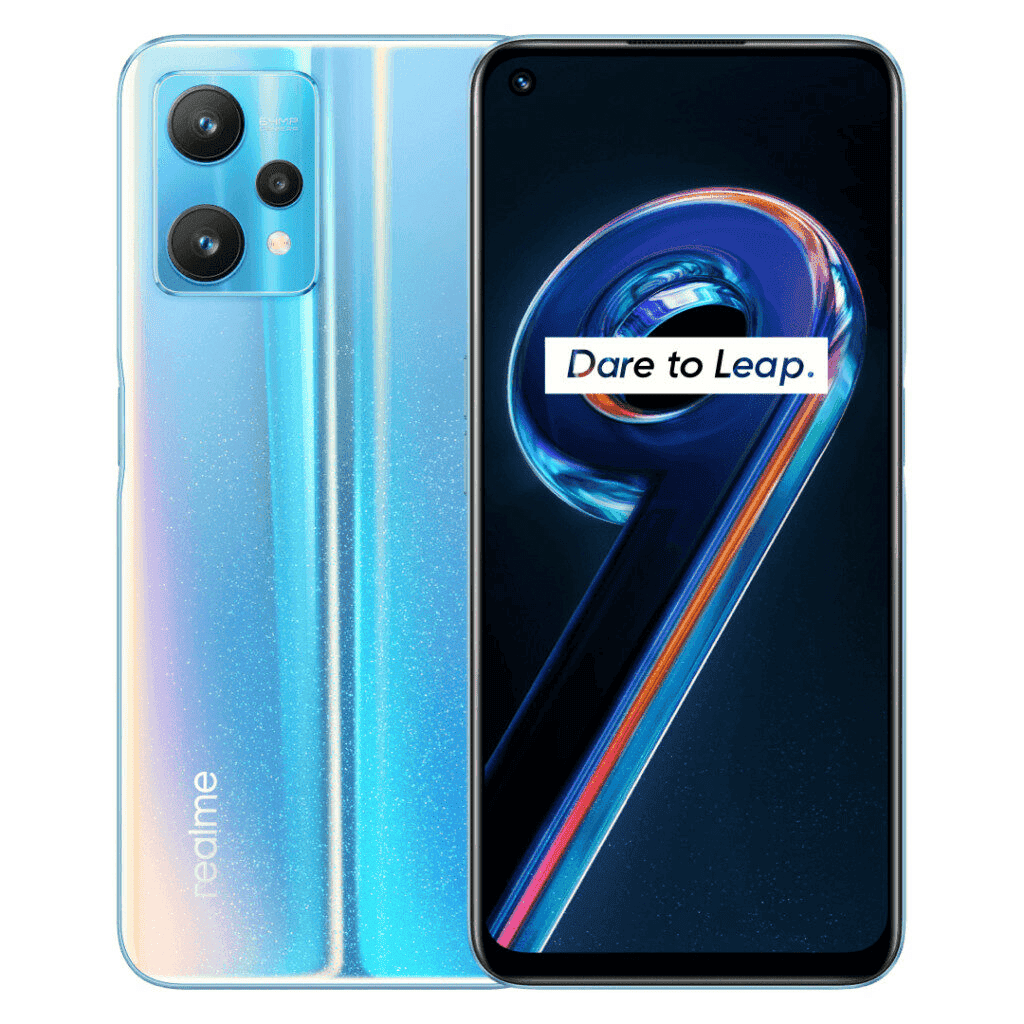
Realme 9 Pro
The first device to hit our Best Smartphone Launches of February 2022 is the Realme 9 Pro. The device arrived with the hard task of surpassing its predecessor and also bringing the Realme numbered series back to relevance. After all, Realme stuck with the same chipset configuration for three generations, and that has pushed some customers eagerly waiting for upgrades away. The Realme 9 Pro arrived alongside a Pro+ variant. While the latter is the true successor for the Realme 8 Pro, we have to say that the Realme 9 Pro still has a lot to offer to the mid-range segment.
The Realme 9 Pro downgrades the AMOLED display from its predecessor to a common LCD. It packs a 6.6-inch IPS LCD screen with a 120 Hz refresh rate. It has 2,412 x 1,080 pixels of resolution, a 20:9 aspect ratio, and 400 ppi density. As usual, the phone sports a top-left punch-hole that serves as a home for the selfie 16 MP selfie snapper. Unfortunately, Realme didn’t mention if there is any kind of protection over this display.
Moving on, the Realme 9 Pro packs a Qualcomm Snapdragon 696 5G. This chipset was Qualcomm’s answer to the rise of MediaTek in the upper mid-range segment. It brings a very efficient 6 nm architecture, and two ARM Cortex-A78 cores clocked at up to 2.2 GHz plus 6 x ARM Cortex-A55 cores clocked at up to 1.7 GHz. The GPU is just the Adreno 619, but it still can run demanding games with medium settings. The phone comes in variants with 6 GB of RAM and 128 GB of storage, or 8 GB of RAM with the same storage. If you consider 128 GB limited, you’ll be glad to know that Realme isn’t removing the micro SD card slot. It comes in a hybrid form.
In terms of optics, the Realme 9 Pro packs a triple-camera setup. It comprises a 64 MP snapper with an f/1.8 aperture and PDAF. Moreover, there is an 8 MP ultrawide snapper, and finally a 2 MP macro snapper.
The Realme 9 Pro only has a single loudspeaker, unlike its main competitor the Redmi Note 11 Pro. Anyway, it keeps the 3.5 mm headphone jack safe. Other features include Wi-Fi 5, Bluetooth 5.1, GPS, and NFC (it’s market-dependent). The device comes with a USB Type-C 2.0. Due to the LCD panel, the phone has a side-mounted fingerprints scanner that doubles as a power button. The phone draws its powers from a 5,000 mAh battery with a 33 W fast charging.
The Realme 9 Pro runs Android 12 with Realme UI 3.0 running on top.
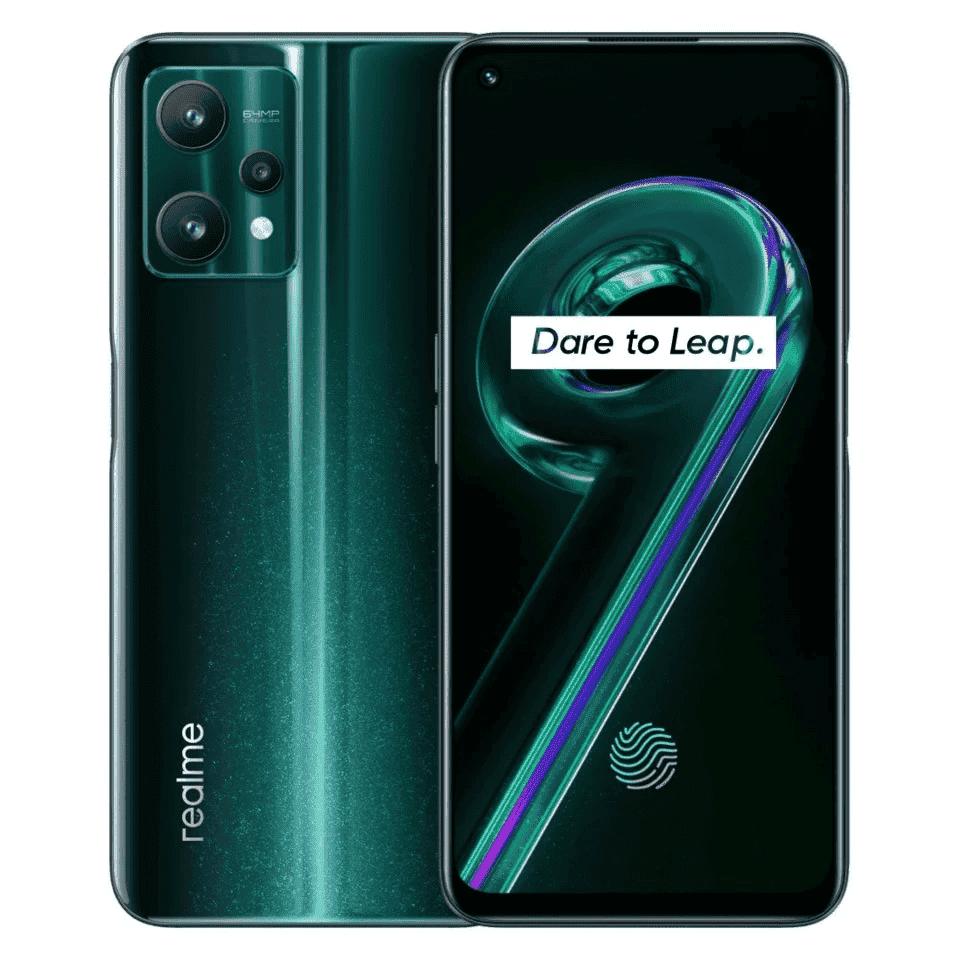
Realme 9 Pro+
The Realme 9 Pro+ is the big surprise of Realme for its new numbered series. Apparently, the Plus does not come from the size, since the device is actually smaller. But the specifications certainly justify why this is the higher offering. Therefore, it’s a decent entry for the mid-range segment and certainly hits the podium as one of the best smartphone launches of February 2022.
The Realme 9 Pro+ flaunts a 6.4-inch Super AMOLED screen with a 90 Hz refresh rate and 600 nits of peak brightness. The panel has a Full HD+ resolution of 2,400 x 1,080 pixels and Corning Gorilla Glass 5. The screen offers an in-display fingerprint scanner, and for the first time in the industry, we have an in-display sensor for heart rate monitoring. That’s a fancy feature that makes the Realme 9 Pro+ differ from any other mid-range phone with an AMOLED display.
Under the hood, the Realme 9 Pro+ packs the MediaTek Dimensity 920 5G SoC. This chip is almost identical, at least on paper, to the Snapdragon 695 5G except for some slight tweaks. The chip has the same 6 nm architecture and the same core configuration. However, it has a slightly high clock speed. The two ARM Cortex-A78 cores are clocked at up to 2.5 GHz, while the 6 x ARM Cortex-A55 sit at a 2 GHz clock speed. The GPU also gets an advantage, it’s a Mali-G68 MC4 which can easily handle demanding games. The phone has variants with 6 GB and 8 GB of RAM and comes with 128 GB or 256 GB of Internal Storage. Unlike its smaller sibling, you can’t expand the storage in this variant which is a pity.
In terms of optics, the Realme 9 Pro+ packs a 50 MP main camera with f/12.8 aperture PDAF, and for the first time in the series, OIS. It also packs the same 8 MP ultrawide snapper, and 2 MP macro as the regular Pro. The phone also has the same top-left punch-hole that comprises the 16 MP selfie snapper. The Realme 9 Pro+ is a slightly better offering in terms of media. Thanks to stereo speakers, also the device does not ditch the 3.5 mm headphone jack.
The Realme 9 Pro+ comes with Wi-Fi 6, Bluetooth 5.2 with A2DP, LE, and aptX HD support. NFC will also be market or region-dependent, and the phone has a USB Type-C port. It comes with a slightly smaller 4,500 mAh battery. Apparently, this comes due to the dual-cell architecture needed for the 60W fast-charging support. Anyway, the phone still has Android 12 with Realme UI 3.0 running on top.
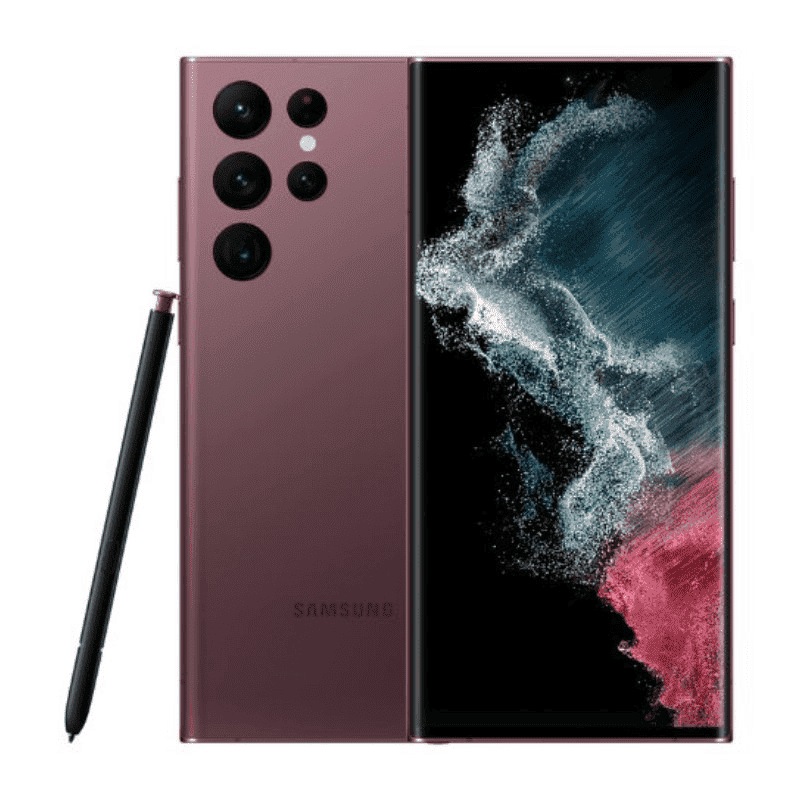
Samsung Galaxy S22 Ultra
The next device in the list of Best Smartphone launches of 2022 is the Samsung Galaxy S22 Ultra. After much anticipation and delays, Samsung finally unveiled its new flagship smartphone series. The Galaxy S22 and S22+ can be considered incremental upgrades over the last year’s models. Therefore, we’re listing only the Galaxy S22 Ultra. Although more expensive, the Galaxy S22 Ultra seems to be the real contender for the 2022 market. The device has beefy specifications, and also integrates some of the Galaxy Note series features such as an integrated S Pen slot.
The Galaxy S22 Ultra deserves the Ultra name thanks to a massive 6.8-inch Dynamic AMOLED 2X display. It offers a 120 Hz refresh rate, and since this is an LTPO 2.0 panel, we have a variable screen refresh rate that ranges from 1 Hz to 120 Hz. The device has HDR 10+ support, 1,750 nits of peak brightness. It comes with Corning Gorilla Glass Victus+ being covered in the front and in the back. The device is also IP68 certified and comes with an aluminum frame that can withstand drop and scratches. The S Pen stylus comes with a 2.8 ms latency. The resolution of the panel is Quad HD+ with 3,088 x 1,440 pixels.
There are two distinct variants of this phone. Europe gets the Exynos 2200 SoC while others will get the Qualcomm Snapdragon 8 Gen 1. We’ll have a chance to depict the Snapdragon 8 Gen 1 specs in other phones in the list, so let’s clarify what the Exynos 2200 variant has since a lot of markets will be getting this one.
The Exynos 2200 comes with a 1 x ARM Cortex-X2 core clocked at up to 2. 8 GHz, 3 x ARM Cortex-A710 cores clocked at up to 2.50 GHz, and 4 x ARM Cortex-A510 clocked at up to 1.8 GHz. This variant also brings the AMD Xclipse 920 GPU promising ray tracing support on smartphones. The Samsung Galaxy S22 Ultra comes with variants with 8 GB of RAM, and 12 GB of RAM. In terms of storage, there are options with 128 GB, 256 GB, and 1 TB of Internal Storage.
In terms of optics, we have some big advancements. The phone has a 108 MP primary camera with PDAF, Laser Auto Focus, and OIS. The secondary 10 MP camera is a periscope telephoto snapper with 10 x optical zoom. There is also a standard 10 MP telephoto lens with 3 x optical zoom. Finally, we have a 12 MP ultrawide snapper with dual pixel PDAF. For selfies and video calls, the phone gets a 40 MP snapper with f/2.2 aperture and PDAF.
The Galaxy S22 Ultra comes with Stereo Speakers but lacks a 3.5 mm headphone jack. The speakers are tuned by Samsung’s AKG. There is Wi-Fi 6e support, and Bluetooth 5.2. The phone also has GPS with GLONASS, NFC, and a USB Type-C 3.2 port. The phone also has an ultrasonic in-display fingerprint scanner. It also comes with Ultra-Wideband support and runs Android 12 with One UI 4.1 on top. The phone gets a massive 5,000 mAh battery with 45 W fast-charging, that’s the fastest charging standard for Samsung smartphones.
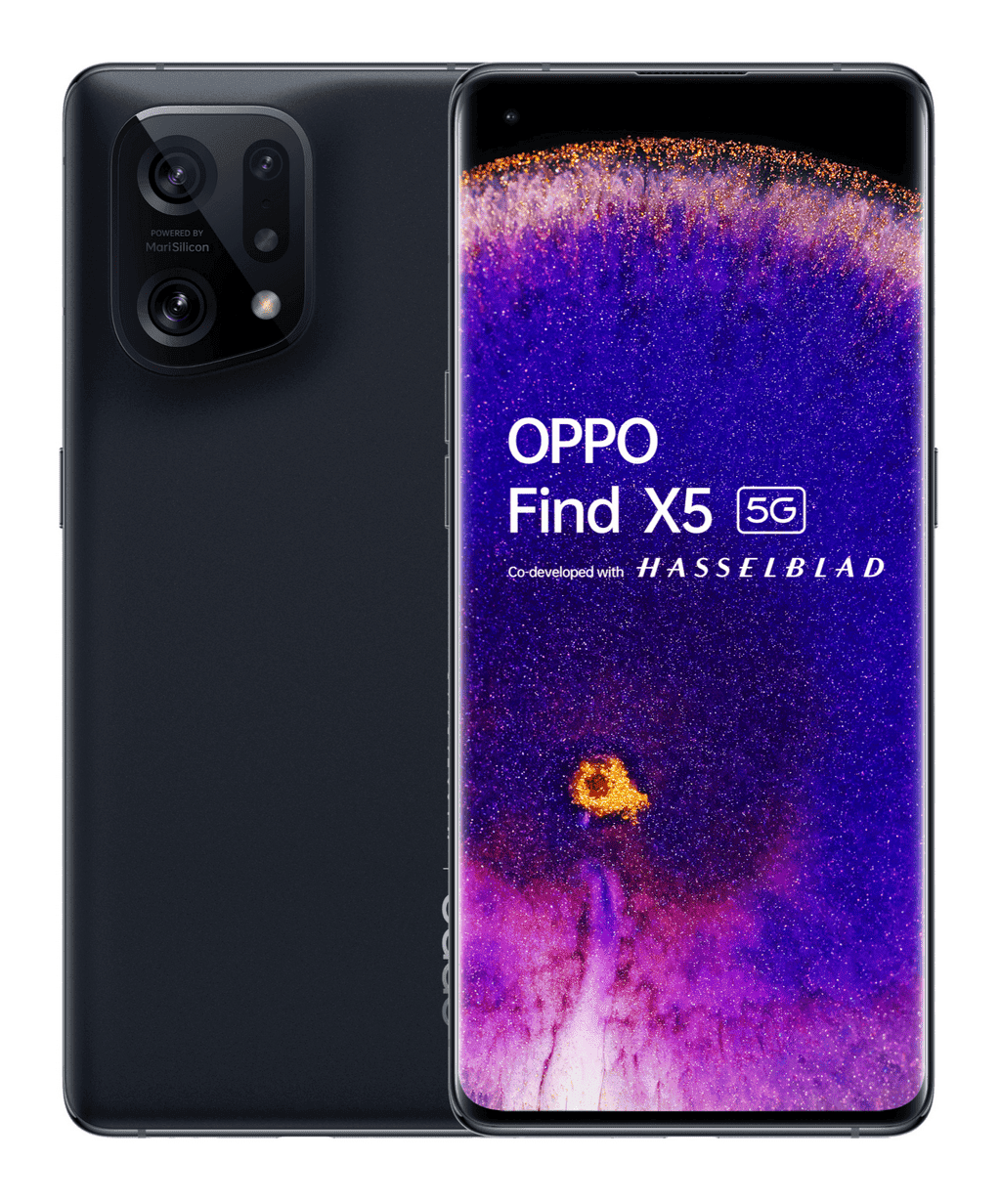
Oppo Find X5
Oppo is one of the most advanced smartphone brands when it comes to the technology employed on its devices. The brand basically kickstarted the trend of fast charging and also brought innovative camera ideas to the market. Therefore, it’s not a surprise to see the company’s new flagship devices among the Best smartphone launches of February 2022.
The Oppo Find X5 was released as an incremental upgrade over the last year’s model. The Oppo Find X5 packs a gorgeous 6.55-inch AMOLED display with a Full HD+ resolution of 2,400 x 1,080 pixels, 20:9 aspect ratio, and 402-pixel density. The phone packs the Corning Gorilla Glass Victus, which offers a 120 Hz refresh rate, 1000 nits of peak brightness, and HDR 10+ support. It brings a top-left aligned punch-hole that serves as a home for the selfie snapper.
Under the hood, the Oppo Find X5 packs the Qualcomm Snapdragon 888 5G, the non-Plus version. It brings 1 x ARM Cortex-X1 core at up to 2.84 GHz, 3 x ARM Cortex-A78 cores clocked at up to 2.42 GHz, and up to 4 x ARM Cortex-A55 cores clocked at up to 1.8 GHz. The phone has an Adreno 660 GPU. In terms of software, the handset runs Android 12 OS with ColorOS 12.1 on the top. The phone has variants with 8 GB and 12 GB of RAM with up to 256 GB of Internal UFS 3.1 storage.
In terms of optics, the Oppo Find X5 comes with a 50 MP Sony IMX 766 snapper with f/1.8 lens with another 50 MP Sony IMX 766 sensor with an f/2.2 ultrawide lens and a 13 telephoto snapper. For selfies and video calls, the phone counts with a 32 MP Sony IMX 615 camera. The phone brings a 6 nm MariSilicon X chip that combines NPU with an ISP to boost image results.
The Oppo Find X5 draws its powers from a 4,800 mAh battery with 80W SuperVOOC wired charging. The device also has 30 W AirVOOC wireless charging and 10 W reverse wireless charging. Other features in the handset include NFC, USB Type C, Bluetooth 5.2, and Wi-Fi 6e.
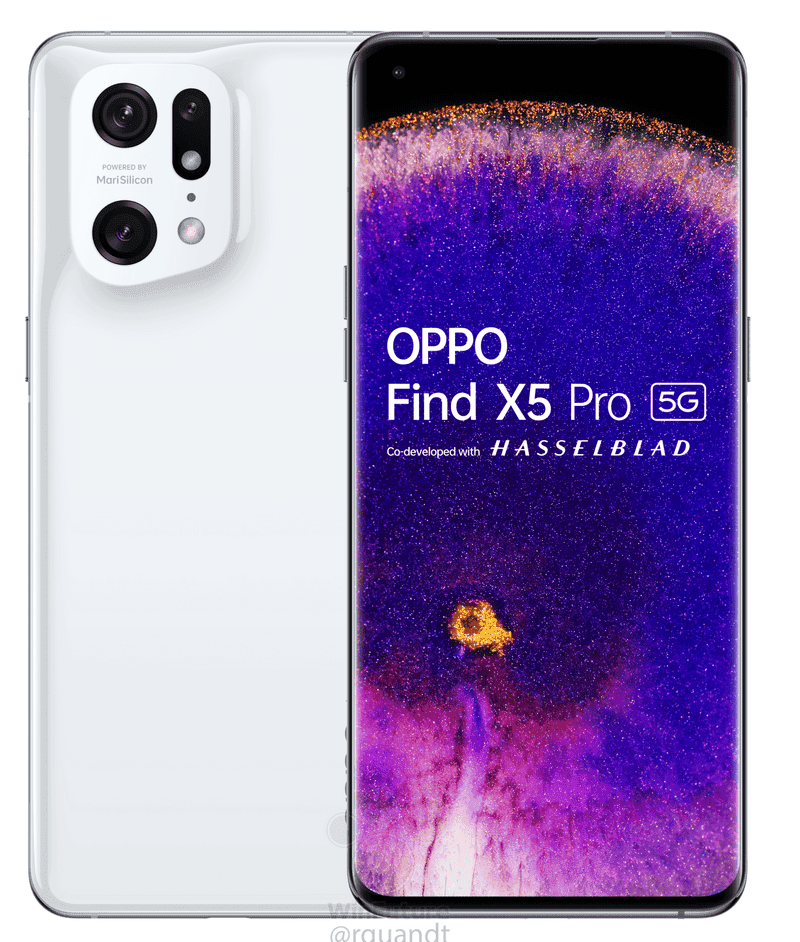
Oppo Find X5 Pro
The Oppo Find X5 takes the crown in the duo and certainly stands as one of the best smartphone launches of February 2022.
The phone packs a 6.7-inch LTPO 2.0 AMOLED screen with a Quad HD+ resolution with 3,216 x 1,440 pixels of resolution. The phone has a 20:9 aspect ratio, 1B colors, 1200 Hz refresh rate, and HDR+ support. It’s a bright display with 1,300 peak brightness and a top-left punch-hole cutout for the camera. The panel comes with a Corning Gorilla Glass Victus for extra protection.
Under the hood, the phone has a Qualcomm Snapdragon 8 Gen 1 SoC. This is Qualcomm’s 5 nm processor with a 1 x ARM Cortex-X2 core clocked at up to 3.0 GHz, 3 x ARM Cortex-A710 cores clocked at up to 2.50 GHz, and 4 x ARM Cortex-A510 cores clocked at up to 1.8 GHz. The phone gets an Adreno 730 GPU for graphical tasks. Interestingly, there is a Dimensity Edition that comes with MediaTek’s Dimensity 9000 SoC. This variant brings the same specs except for the MariSillicon X NPU. It gets a slightly higher 3.05 GHz clock speed and a Mali-G710 MC10 GPU. The phone has 8 GB or 12 GB of RAM, and 256 GB or 512 GB of Internal Storage.
In terms of optics, the phone has a 50 MP f/1.7 camera with multi-directional PDAF, and OIS. Moreover, there is a 13 MP telephoto camera with 2x optical zoom and PDF. Finally, we have a 50 MP ultrawide snapper with multi-directional PDAF. For selfies and video calls, there is a 32 MP snapper with an f/2.4 aperture. The camera is boosted by a MariSilicon X Image chip. There is also Hasselblad’s color calibration.
The Oppo Find X5 Pro has stereo speakers, Wi-Fi 6e, Bluetooth 5.2, NFC, and a USB Type C 3.1 port. The phone draws its powers from a huge 5,000 mAh battery with 80 W fast-charging, and 50 W wireless fast-charging.
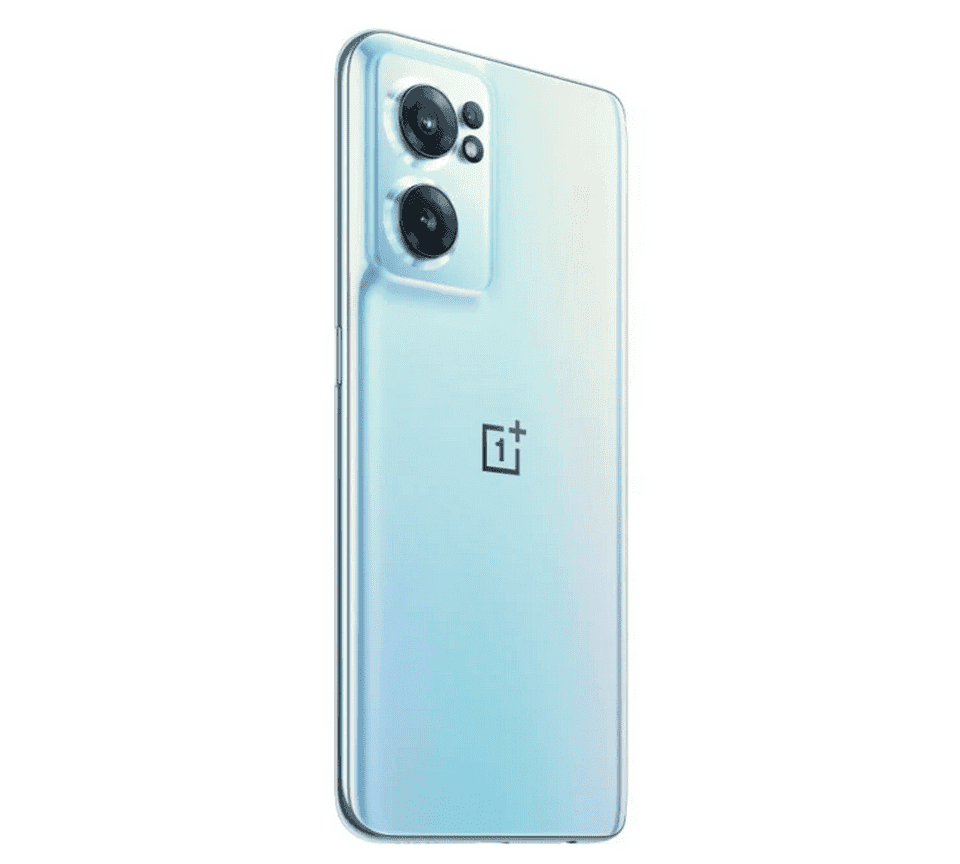
OnePlus Nord CE 2
Going back to the mid-range department, OnePlus unveiled a new mid-range contender with 5G connectivity. Rather than bringing its OnePlus 10 series, or even launching a OnePlus Nord 3, the company decided to bring the OnePlus Nord CE 2 5G variant in February 2022. The handset, as the name suggests, is a new incremental upgrade for the last year’s OnePlus Nord CE 5G.
The OnePlus Nord CE 2 packs a 6.43-inch Super AMOLED display with 90 Hz refresh rate and HDR 10+ support. The phone has a Full HD+ resolution with 2,400 x 1,080 pixels of resolution and Corning Gorilla Glass 5 coating. The handset has a top-left punch-hole at the top of the display.
Under the hood, the phone gets its prowess from a MediaTek Dimensity 900 5G SoC made on a 6 nm architecture. This platform brings 2 x ARM Cortex-A78 cores clocked at up 2.4 GHz, and 6 x ARM Cortex-A55 cores clocked at up to 2.0 GHz. The graphical tasks are ensured by a Mali-G68 MC4 GPU. The phone also brings 6 GB or 8 GB of RAM, but there is 128 GB of Internal Storage.
The phone has a 64 MP camera with PDAF, there is also an ultrawide snapper with 8 MP resolution and f/2.2 aperture. Finally, we have a 2 MP f/2.4 macro aperture. The handset has a 16 MP snapper for selfies and video calls with HDR.
The OnePlus Nord CE 2 has Wi-Fi 6, Bluetooth 5.2 with A2DP, LE, and aptX HD. The phone also has NFC and an in-display fingerprint scanner. It draws powers from a 4,500 mAh battery with 65 W fast charging.
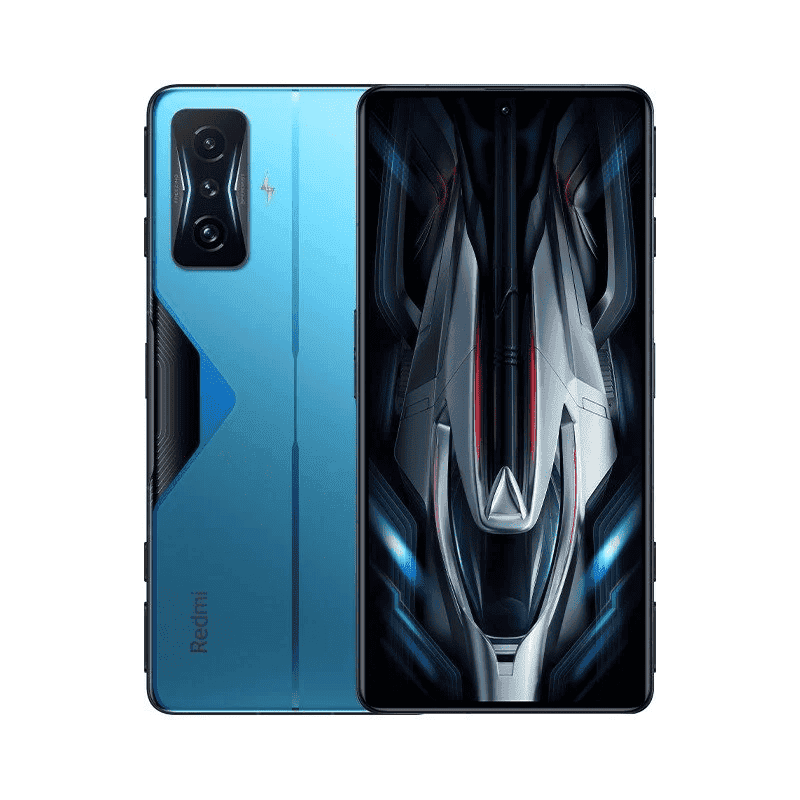
Redmi K50 Gaming Edition
The Redmi K50 Gaming Edition was a surprising launch in February 2022. The device kickstart the Redmi K50 series that has been leaking since the last year. Therefore it certainly stands as one of the best smartphone launches of February 2022. The device will probably reach global markets as POCO F4 GT.
The Redmi K50 Gaming will pack a 6.67-inch OLED display with a Full HD+ screen with 2,400 x 1,080 pixels of resolution. The phone also has a coating of Corning Gorilla Glass Victus. An aluminum frame and a Gorilla Glass Victus back complete the smartphone’s build. The display supports HDR 10+ content and refreshes at 120 Hz.
Under the hood, the Redmi K50 Gaming packs a Qualcomm Snapdragon 8 Gen 1 SoC. The phone comes in variants with 8 GB of RAM and 12 GB of RAM. In terms of storage, the phone has 128 GB of Internal Storage or 256 GB of Internal Storage.
In terms of optics, the phone has a 64 MP main camera with f/1.7 aperture and PDAF. The phone also has an 8 MP ultrawide snapper with an f/2.2 aperture. Finally, we have a 2 MP macro camera with an f/2.4 aperture. The phone also has a 20 MP selfie snapper that sits on a centered punch hole.
In terms of media, the phone sports Stereo Sound with Quad Speakers. Unfortunately, it lacks a 3.5 mm headphone jack, but the speakers are tuned by JBL. As for connectivity, the phone has Wi-Fi 6e, Bluetooth 5.2 with A2DP, and LE. The handset also has GPS with AGPS, GLONASS, BDS, GALILEO, QZSS, and NavIC.
The handset also has a side-mounted fingerprint scanner and a huge battery with 4,700 mAh battery with 120 W charging. It runs Android 12 with MIUI 13 straight out of the box.
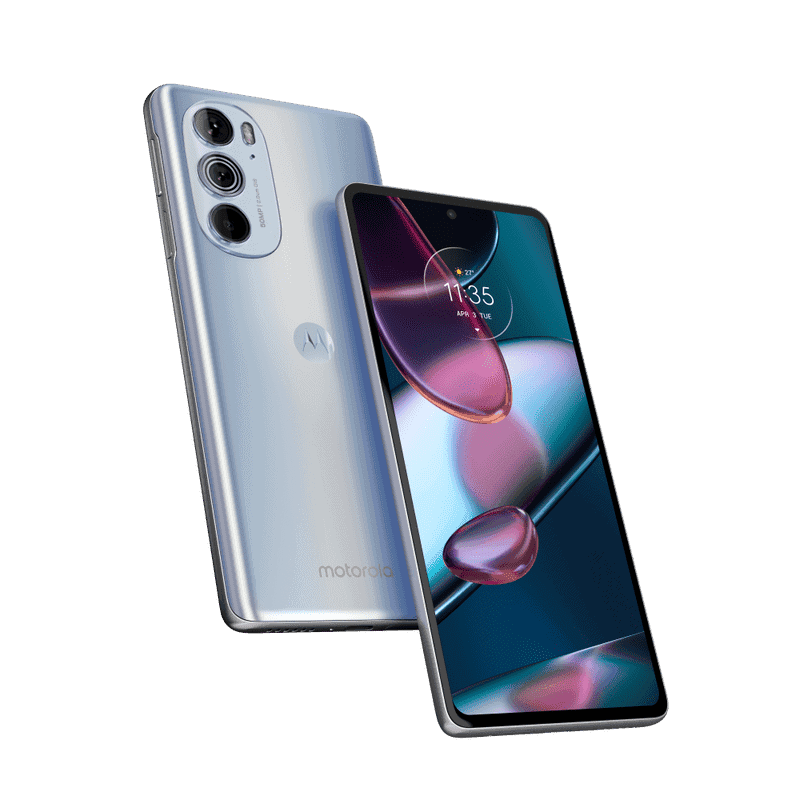
Motorola Edge 30 Pro
The Motorola Edge 30 Pro is another device that certainly deserves its place as one of the best smartphone launches of 2022. The device was unveiled after much anticipation. As expected, the handset is a rebadged Motorola Edge X30 and brings everything that made the Snapdragon 8 Gen-1 powered smartphone shine in China.
The Motorola Edge 30 Pro packs a 6.7-inch OLED display with 2,400 x 1,080 pixels of resolution. The phone also has a 20:9 aspect ratio with 395 pixels per inch. The phone has a centered punch-hole, and the under-display camera won’t be making its way to the Global markets. The panel refreshes at a 144 Hz refresh rate. Curiously, the panel comes with the old Corning Gorilla Glass 3 protection which is very strange behavior.
Under the hood, the Motorola Edge 30 Pro packs the same Qualcomm Snapdragon 8 Gen 1 found in current flagships. It comes with 8 GB of RAM, but there is also another option with 12 GB of RAM. In terms of storage, things are pretty much democratic. There is an option with 128 GB, another one with 256 GB, and finally a higher variant with 512 GB of Internal Storage.
In terms of optics, the Motorola Edge 30 Pro has a 50 MP main camera with f/1.8 aperture, multi-directional PDAF, and Optical Image Stabilization. The phone also has a 50 MP ultrawide snapper with an f/2.2 aperture. Finally, we have a 2 MP f/2.4 depth sensor. For selfies and video calls, the phone has a 60 MP snapper with f/2.2 aperture and HDR.
The handset has stereo speakers, Wi-Fi 6e, GPS, NFC, and a USB Type C 3.1 port, as well as support for DisplayPort 1.4 standard. The Motorola Edge 30 Pro gets a 4,800 mAh battery with 68 W fast charging. In North America, the phone carries the Motorola Edge Plus 2022 moniker and only has 30 W wired charging. In any version, it runs Android 12 with MyUX running on top.
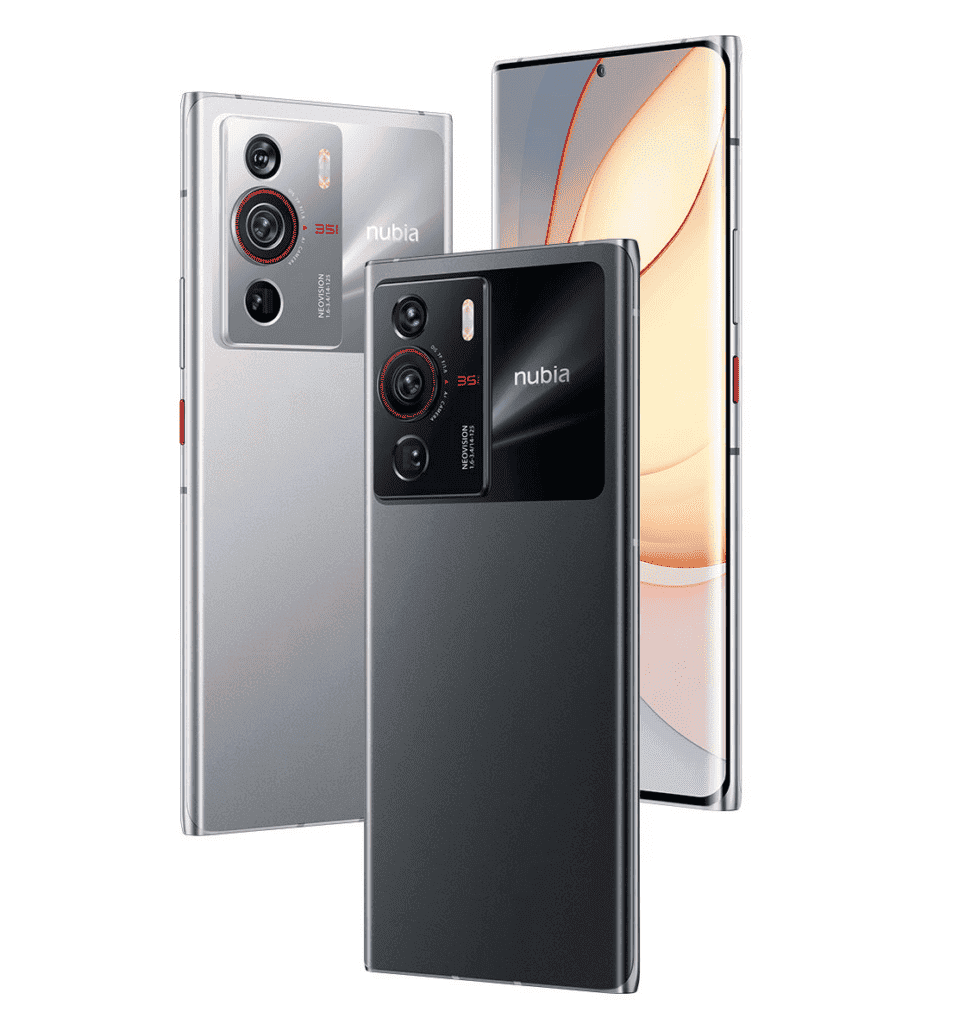
Nubia Z40 Pro
Near the end of February 2022, the company unveiled the Nubia Z40 Pro smartphone. Although it’s late, the device arrived at the perfect time to figure as one of the best smartphone launches of February 2022. The Nubia brings a lot of innovative ideas to the smartphone segment. Let’s see if it will try its luck on global markets, or will remain limited to the Chinese market.
The Nubia Z40 Pro flaunts a 6.67-inch AMOLED screen with a 144 Hz refresh rate, HDR 10+, and 1000 nits peak brightness. The panel has 2,400 x 1,080 pixels of resolution. There is a centered punch-hole that serves as a home for the 16 MP selfie snapper with HDR support.
Under the hood, the phone packs the Qualcomm Snapdragon 8 Gen 1. The things are pretty wild when it comes to the RAM / Storage configuration. For instance, the phone starts with 8 GB, 12 GB, and reaches a whopping amount of 16 GB of RAM. In terms of storage, the phone starts with 128 GB, there is a 256 GB variant, a 512 GB storage, and finally, the 16 GB RAM version comes along with 1 TB of Internal Storage.
In terms of optics, the phone has a 64 MP camera with f/1.7 aperture with PDAF and OIS. The phone also has an 8 MP periscope telephoto with PDAF, OIS, and 5 x optical zoom. The phone also has a 50 MP ultrawide snapper with an f/2.2 aperture.
The handset also has stereo speakers. Wi-Fi 6, Bluetooth 5.2, GPS with A-GPS, GLONASS, GALILEO, and BDS. The phone has NFC, and a USB Type-C 3.1 port. The phone also gets an under-display fingerprint scanner of the optical type. It draws powers from a 5,000 mAh battery in the regular version. However, there’s a gravity edition with a 4,600 mAh battery. The regular version has 80W wired charging. The Gravity Variant has 66W fast-charging, plus 15W of magnetic charging.
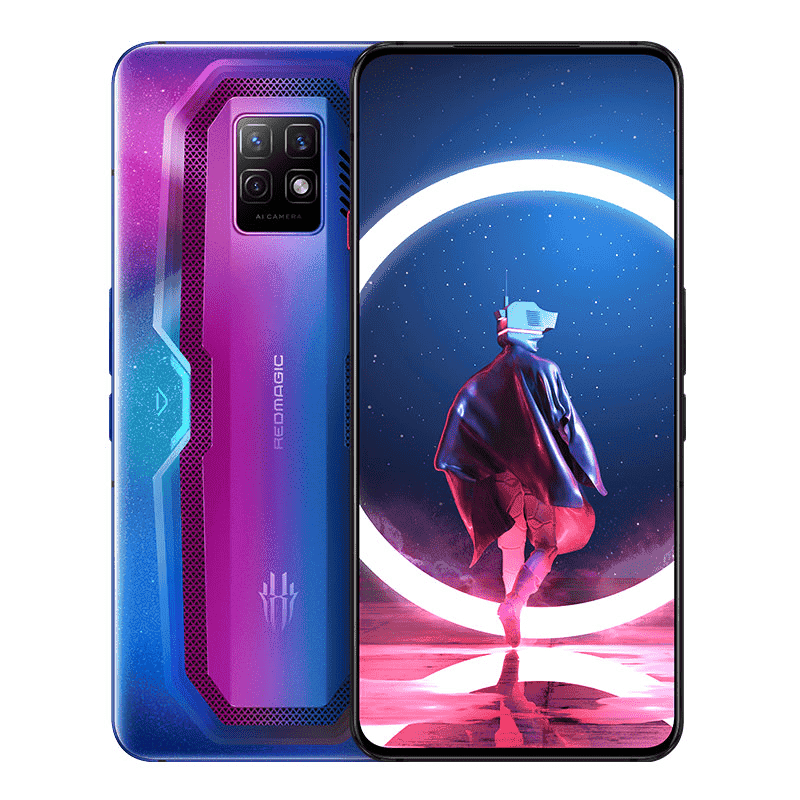
Nubia Red Magic 7 Pro
The next device in the list of best smartphone launches of February 2022, is the Nubia Red Magic 7 Pro. That’s right it’s a gaming smartphone, however, it’s so freaking good that we can’t simply ignore it. Furthermore, gaming smartphones are relevant in the industry nowadays.
The Nubia Red Magic 7 Pro flaunts a 6.8-inch AMOLED display with 600 nits of typical brightness. It gets a Full HD+ resolution with 2,400 x 1,080 pixels of resolution, 20:9 aspect ratio, with Corning Gorilla Glass 5.
Under the hood, the handset has Qualcomm Snapdragon 8 Gen 1 SoC. The phone, as a gaming smartphone, has hardware that really impresses. The handset has variants with 8 GB, 12 GB, 16 GB of RAM. In terms of storage, the Nubia Red Magic 7 Pro will pack 128 GB, 256 GB, 512 GB, and 1 TB of Internal Storage. It’s a UFS 3.1 Storage, while RAM is LPDDR5 standard. One of this devices’ big highlights is the built-in cooling fan and an aviation aluminum middle frame.
In terms of optics, the Nubia Red Magic 7 Pro has a 64 MP main camera with f/1.8 aperture, and PDAF. The phone also has an 8 MP ultrawide snapper with f/2.0 aperture, and a 2 MP macro. The camera is an under-display snapper with 16 MP resolution.
The handset also has stereo speakers and brings a 3.5 mm headphone jack. In terms of connectivity, the phone has Wi-Fi 6e support. It also brings a Bluetooth 5.2 with A2DP, aptX, LE, and more. The handset also has GPS, NFC, and USB Type C 3.0 ports. The gaming smartphone draws its powers from a 5,000 mAh battery with whopping 135W fast charging.
Best Smartphone Launches – Conclusion and Disclaimer
These devices compose our list of best smartphone launches of February 2022. Of course, there may be other options that passed through our selection. If you think that there is any other device that deserves a place in the list, feel free to leave it in the comments section below.







